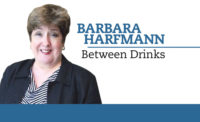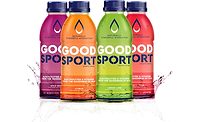Steaz: Sparkling Tea Turns To Mainstream Markets
By Sarah Theodore
For some in the beverage marketplace, “organic,” “Fair Trade” and “sustainable” are relatively new buzzwords. But Eric Schnell and Steven Kessler, co-founders of the Healthy Beverage Co., Newtown, Pa., took those ideas to heart long before they launched their flagship Steaz Sparkling Green Tea five years ago.
“I was brought up around the whole natural foods
movement in the ‘70s, basically, eating healthy, watching the
environment, trying to live a more sustainable life,” Schnell says.
Kessler developed his base in the natural foods
industry in the 1990s working in the vitamin and nutraceutical supplement
industry, and the two crossed paths when Schnell got into the organic tea
business. As they watched the health and wellness market boom, they hatched
an idea for a new beverage concept that combined healthful attributes with
the mainstream soft drink flavors consumers already loved.
“Soda’s not going to go away, ever,”
Schnell says. “It’s flat now, and it’s not growing, but
Americans love bubbly, sweet-flavored drinks. That’s not going to
change. It’s not that people don’t love the taste of soda,
it’s just that people don’t love what’s in the bottle
anymore.”
While they began with the concept of an organic soft
drink, it was the decision to add a cup of green tea to every bottle that
defined Steaz.
“We started watching the trend of green tea take
off in America,” Schnell says. “Fortunately, brands like
Arizona Green Tea did a great job of introducing its bitter taste profile
to the mainstream masses in America, with a bit of a sweetness profile that
made it acceptable.”
The company chose a mild green tea from Sri Lanka that
it felt blended well with popular soft drink flavors such as Cola, Ginger
Ale, Orange, Grape and Root Beer.
“We’re always [going to have] mainstream
flavors,” Schnell says. “We don’t make up ‘fru
fru’ flavors. All of our flavors are tried-and-true, nostalgic
flavors.”
A natural base
In addition to green tea, the Healthy Beverage Co.
made USDA Organic and Fair Trade certification part of its company mission.
The concept was a natural fit for the natural foods channel, and according
to Schnell, the brand has grown an average 80 percent a year during the
past five years in that market.
As a carbonated product, Steaz filled a void left by
more mainstream brands in the natural foods channel, and customers soon
asked the company to fill another unfilled niche — energy drinks. The
company introduced Steaz Energy in 2007.
The company tapped a number of industry partners in
the development of Steaz Energy. It sourced the product’s acai from
Sambazon, San Clemente, Calif., and yerba mate from Guayaki, Sebastopol,
Calif. Steaz Energy also contains organic guarana, and of course, green
tea.
“We teamed up with a couple companies
we’re friendly with and wanted to be part of our project, and made
what we think is Mother Nature’s version of Red Bull,” Schnell
says.
“It’s all done naturally, organically and
Fair Trade sourced,” he adds.
Just as the energy drink category required some
finesse to fit the natural food channel’s requirements, so too did
diet soft drinks. The Healthy Beverage Co. chose to forgo the use of
alternative sweeteners and instead simply reduce the amount of sugar when
it introduced diet products last summer. The diet offerings contain 60
percent less sugar than the regular products, for about 40 calories per
serving.
To extend its reach even further, the company rolled
out its core line of sparkling green tea products in 12-ounce cans last
fall. Cans are more portable and are allowed in venues where glass is not
– including schools. The Healthy Beverage Co. recently received
exemption from the USDA to be served in schools during lunchtime. Its first
school market will be Iowa, where it has been approved for sale in 350
public schools.
Expansion plans
While the natural foods channel has provided the
company’s base, it feels 2008 will be a breakout year for other
channels, including convenience stores, foodservice and grocery. Schnell
says the current lineup — including glass bottles for the natural and
gourmet market, and cans and energy drinks for the foodservice and direct
store delivery markets — provide the appropriate offering for
everyone.
To meet its distribution goals, the company plans to
double the size of its sales team early this year, with executives who
specialize in DSD and foodservice.
“We always wanted this brand to some day be as
available as those mainstream brands, so when a consumer walks down the
aisle in 2010 of their local Safeway or Kroger, they have the choice to buy
a Coca-Cola, Pepsi-Cola or Steaz Cola,” Schnell says.
Socially conscious priorities
The Healthy Beverage Co.
puts social responsibility at the core of its marketing efforts, whether
they be events for health-related causes, children’s issues or the
environment, says co-founder Eric Schnell. “Everything we do is about
aligning ourselves with grassroots marketing events,” he says.
“Being organically certified, the environment is huge for
us.”
To emphasize its green goals, the company recently
purchased an airport shuttle bus, refurbished it into a Steaz-themed
sampling vehicle that runs on bio-fuel, and is planning a 200-stop tour in
2008.
The company also received the 2007 Socially
Responsible Business Award during the Natural Products Expo East show last
fall for its support of sustainable farming practices and Fair Trade
certification. As much of its product is based on tea from Sri Lanka,
Schnell says the company contributes money each quarter to the Sri Lanka
Foundation, which set up a disaster relief fund following the 2004 tsunami.


